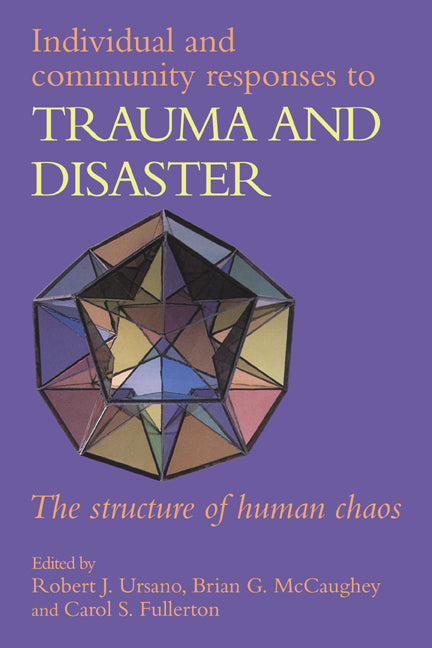Freshly Printed - allow 8 days lead
Couldn't load pickup availability
Individual and Community Responses to Trauma and Disaster
The Structure of Human Chaos
A wide-ranging reference text on the effect of trauma and disasters, for health professionals and research workers.
Robert J. Ursano (Edited by), Brian G. McCaughey (Edited by), Carol S. Fullerton (Edited by), Beverley Raphael (Foreword by)
9780521556439, Cambridge University Press
Paperback, published 24 August 1995
440 pages, 17 b/w illus. 48 tables
23 x 15.3 x 2.4 cm, 0.62 kg
' … an extremely valuable resource for the novice in the field as well as a ready reference for the seasoned professional. It is an absolute must for anyone interested in the topic. If you work with victims of trauma and disaster, and buy only one book this year, this should be the one …'. J. D. Baxendale, Journal of Truamatic Stress
The aims of this book are twofold: to improve understanding of the human experience of trauma, whether at the level of the individual or the community, and to help those who are its victims. The range of issues covered is impressive, from the biological basis of post-traumatic stress reactions, through practical strategies for prevention and treatment, to the psychosocial and fictional construction of terror. Wherever possible the editors have sought to impart understanding, order, and predictability to the experience of trauma and disasters in the belief that the way to recovery is through the mastery of chaotic events. This book will serve and inform clinicians, administrators and research workers in psychiatry, psychology, public health and related areas.
Part I. Introduction: 1. Trauma and disaster R. J. Ursano, C . S. Fullerton and B. G. McCaughey
Part II. The Nature of Traumatic Stress: 2. The psychology of terror and its aftermath H. C. Holloway and C. S. Fullerton
3. Exposure to traumatic death: the nature of the stressor R. J. Ursano and J. E. McCarroll
4. Psychological and psychiatric aspects of technological disasters L. Weisaeth
5. Traumatic effects of accidents U. F. Malt
6.The human experience of earthquakes B. G. McCaughey, K. J. Hoffman and C. H. Llewellyn
7. Psychological effects of toxic contamination B. L. Green, J. D . Lindy and M. C. Grace
Part III. The Role of Psychosocial Contaxt in Responses to Trauma and Disasters: 8. Social support and perceived control as moderators of responses to dioxin and flood exposure S. D. Solomon and E. M. Smith
9. Debriefing following traumatic exposure A. Y. Shalev
10. Relocation stress following natural disasters E. T. Gerrity and P. Steinglass
11. Group reactions to trauma: an avalanche accident P. Herlofsen
12. Community responses to disaster: the Gander plane crash K. M. Wright and P. T. Bartone
Part IV. Responses to Trauma Across the Life Cycle: 13. Children of war and children at war: child victims of terrorism in Mozambique J. A. Shaw and J. J. Harris
14. Stress and coping with the trauma of war in the Persian Gulf: the hospital ship USNS Comfort M. P. Dinneen, R. J. Pentzien and J. M. Mateczun
15. Long-term sequelae of combat in World War II, Korea and Vietnam: a comparative study R. Rosenheck and A. Fontana
16. Psychophysiological aspects of chronic stress following trauma L. M. Davidson and A. Baum
17. Individual and community reactions to the Kentucky floods: findings from a longitudinal study of older adults F. H. Norris, J. F. Phifer and K. Kaniasty
Conclusions
18. The structure of human chaos R. J. Ursano, B. G. McCaughey and C .S. Fullerton.
Subject Areas: HIV / AIDS [MJCJ2]


